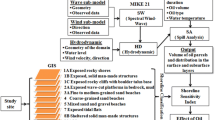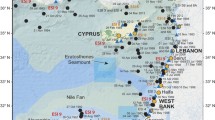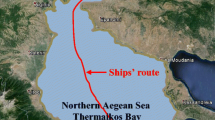Abstract
Portugal is strongly vulnerable to sea hazards due to intense vessel traffic and sea conditions. The southwest region off the Iberian Peninsula lies in the main route from the Mediterranean and Southern Hemisphere to the Northern Europe, causing a ship concentration in a narrow band off Cape São Vicente. Tankers represent a significant part of the vessel traffic and the occurrence of oil spills cannot be disregarded. Cape São Vicente region is part of a Natural Park with 110 Km of coastline, integrated in the European Natura 2000 network and its socio-economic context is closely related with sea resources exploitation, particularly fishing and tourism. Recognizing the importance of accurate information systems for the decision making process in an oil spill situation, this work presents the development of an integrated tool to support the process in the Algarve coast. The system relies in a regional operational mathematical model based on the MOHID modelling system. The system core is composed by three models (3D hydrodynamics, wave and Lagrangian transport) all linked in the same system and exchanging information in real time. Oil advection and weathering processes are coupled to the Lagragian transport model. The overall operational system includes external operational data products as inputs, to ensure a successful validation of the results. The system is linked to stakeholders and response authorities using a geographic referenced database based on Mapserver technology that will include relevant information for oil spill management.











Similar content being viewed by others
References
Al-Rabeh AH, Lardmer RW, Gunay N, Hossain M (1995) OILPOL—an oil fate and transport model for the Arabina Gulf. Proc Fourth Saudi Eng Conf 5:415–427
Balseiro CF, Carracedo P, Gomez B, Leitão PC, Montero P, Naranjo L, Penabad E, Perez-Munuzuri V (2003) Tracking the prestige oil spill: an operational experience in simulation at meteogalicia. Weather 58:452–458. doi:10.1256/wea.51.03
Bebiano MJ (1995) Effects of pollutants in the Ria Formosa Lagoon, Portugal. Sci Total Environ 171:107–115. doi:10.1016/0048-9697(95)04672-9
Blayo, E., Debreu, L., (2005) Revisiting open boundary conditions from the point of view of characteristic variables. Ocean Modelling 9: 231– 252. doi:10.1016/j.ocemod.2004.07.001
Daniel P, Dandin, P (2005) Benefits and use of operational oceanography systems for drift forecasts. Proceedings of the 2005 International Oil Spill Conference, American Petroleum Institute, Washington, DC
Dias JA (1988) Aspectos geológicos do Litoral Algarvio. Geonovas 10:113–128
Dobricic S, Pinardi N, Adani M, Bonazzi A, Fratianni C, Tonani M (2005) Mediterranean forecasting system: an improved assimilation scheme for sea-level anomaly and its validation. Q J Roy Meteorol Soc 131:3627–3642
Dobricic S, Pinardi N, Adani M, Tonani M, Fratianni C, Bonazzi A, Fernandez V (2006) Daily oceanographic analyses by the Mediterranean basin scale assimilation system. Ocean Sci 3:1977–1998
Hacket B, Comerma E, Daniel P, Ichikawa H (2008) Marine pollution monitoring and prediction. GODAE Final Symposium, Nice
Hansen SE, Stel JH (1997) SEAWATCH. Performance and future. In “Operational Oceanography. The challenges for European Cooperation”, Proceedings of the 1st International. Conference on EuroGOOS
Holthuijsen LH, Booij N, Padilla-Hernandez R (1997) A curvi-linear, third-generation coastal wave model. Conference of Coastal Dynamics, Plymouth, pp 128–136
INE—Instituto Nacional de Estatística (2008) Statistical Yearbook of the Algarve Region. INE, Lisbon
Janeiro J, Fernandes E, Martins F, Fernandes R (2008) Wind and freshwater influence over hydrocarbon dispersal on Patos Lagoon, Brazil. Mar Pollut Bull 56:650–665. doi:10.1016/j.marpolbul.2008.01.011
Kallos G, the SKIRON group (1998) The SKIRON forecasting system: VOL. I: Preprocessing, ISBN 960–8468–15–9; VOL. II: Model description, ISBN 960– 8468–16–7; VOL. III: Numerical techniques, ISBN 960–8468–17–5; VOL. IV: Parallelization, ISBN 960–8468–18–3; VOL. V: Postprocessing, ISBN 960–8468–19–1; VOL. VI: Procedures, ISBN 960–8468–20–5
Korres G, Lascaratos A (2003) A one-way nested, eddy resolving model of the Aegean and Levantine basins: implementation and climatological runs. Ann Geophys 21:205–220
Lardner RW, Zodiatis G, Loizides L, Demetropoulos A (1998) An operational oil spill model in the Levantine Basin (Eastern Mediterranean Sea). International symposium on Marine Pollution, Monaco
Leitão P, Coelho H, Santos A, Neves R (2005) Modelling the main features of the Algarve coastal circulation during July 2004: a downscaling approach. J Atmos Ocean Sci 10:421–462. doi:10.1080/17417530601127704
Mackay D, McAuliffe CD (1988) Fate of hydrocarbons discharge at sea. Oil Chem Pollut 5:1–20
Martins F, Leitão P, Silva A, Neves R (2001) 3D modelling in the sado estuary using a new generic vertical discretization approach. Oceanol Acta 24:S51–S62
Martinsen EA, Engedahl H (1987) Implementation and testing of a lateral boundary scheme as an open boundary condition in a barotropic ocean model. Coast Eng 11:603–627
Nittis K, Zervakis V, Perivoliotis L, Papadopoulos A, Chronis G (2001) Operational monitoring and forecasting in the Aegean Sea: system limitations and forecasting skill evaluation. Mar Pollut Bull 43:154–163. doi:10.1016/S0025-326X(01)00055-8
Pinardi N, Allen I, Demirov E, De Mey P, Korres G, Lascaratos A, Le Traon P-Y, Maillard C, Manzella G, Tziavos C (2003) The Mediterranean Ocean Forecasting System: first phase of implementation (1998–2001). Ann Geophys 21:3–20
Poseidon System, Hellenic Center for Marine Research. http://www.poseidon.hcmr.gr. Accessed 20 February 2010.
Riflet G, Juliano M, Fernandes L, Leitão PC, Neves R (2008) Operational ocean forecasting of the Portuguese waters. Mercator Ocean Quarterly Newsletter 30:20–32
Sotillo MG, Alvarez Fanjul E, Castanedo S, Abascal AJ, Menendez J, Emelianov M, Olivella R, García-Ladona E, Ruiz-Villarreal M, Conde J, Gómez M, Conde P, Gutierrez AD, Medina R (2008) Towards an operational system for oil-spill forecast over Spanish waters: initial developments and implementation test. Mar Pollut Bull 56:686–703
Soukissina T, Chronis G (2000) Poseidon: a marine environmental monitoring, forecasting and information systems for the Greek seas. Mediterr Mar Sci 1:71–78
Vitorino J (2010) Personal Communication. International Oil Pollution Compensation Funds (2009) Prestige report. http://www.iopcfund.org/prestige.htm. Accessed 29 January 2010
Vitorino J, Soares C, Almeida S, Rusu E, Pinot J (2003) MOCASSIM- an operational forecast system for the Portuguese coastal waters. Geophys Res Abstr 5:07438
WAMDI Group (1988) The WAM model—a third generation ocean wave prediction model. J Phys Oceanogr 18:1775–1810
Zodiatis G, Lardner L, Demirov E, Georgiou G, Manzella G, Pinardi N (2003a) An operational European global ocean observing system for the Eastern Mediterranean Levantine Basin: the Cyprus coastal ocean forecasting and observing system. J Mar Tech Soc 37:115–123
Zodiatis G, Lardner R, Georgiou G, Demirov E, Pinardi N, Manzella G (2003b) The Cyprus coastal ocean forecasting and observing system, a key component in the growing network of European ocean observing systems. Sea Tech 44:10–15
Zodiatis G, Lardner R, Lascaratos A, Georgiou G, Korres G, Syrimis M (2003c) High resolution nested model for the Cyprus and NE Levantine Basins, Eastern Mediterranean Sea: implementation and climatological runs. Ann Geophys 21:221–236
Zodiatis G, Lardner R, Hayes D, Georgiou G (2005) An operational oceanographic forecasting and observing system for the Eastern Mediterranean Levantine basin: The Cyprus coastal ocean forecasting and observing system, 4th EuroGOOS Conference Proceedings, Brest (France)
Acknowledgments
This work is being funded by a Doctoral grant, reference SFRH/BD/44850/2008, from the Fundação para a Ciência e Tecnologia to whom we would like to thank. A special thank to Dr. Francisco Silva and Dr. João Vitorino from Instituto Hidrográfico.
Author information
Authors and Affiliations
Corresponding author
Rights and permissions
About this article
Cite this article
Janeiro, J., Martins, F. & Relvas, P. Towards the development of an operational tool for oil spills management in the Algarve coast. J Coast Conserv 16, 449–460 (2012). https://doi.org/10.1007/s11852-012-0201-8
Received:
Revised:
Accepted:
Published:
Issue Date:
DOI: https://doi.org/10.1007/s11852-012-0201-8




